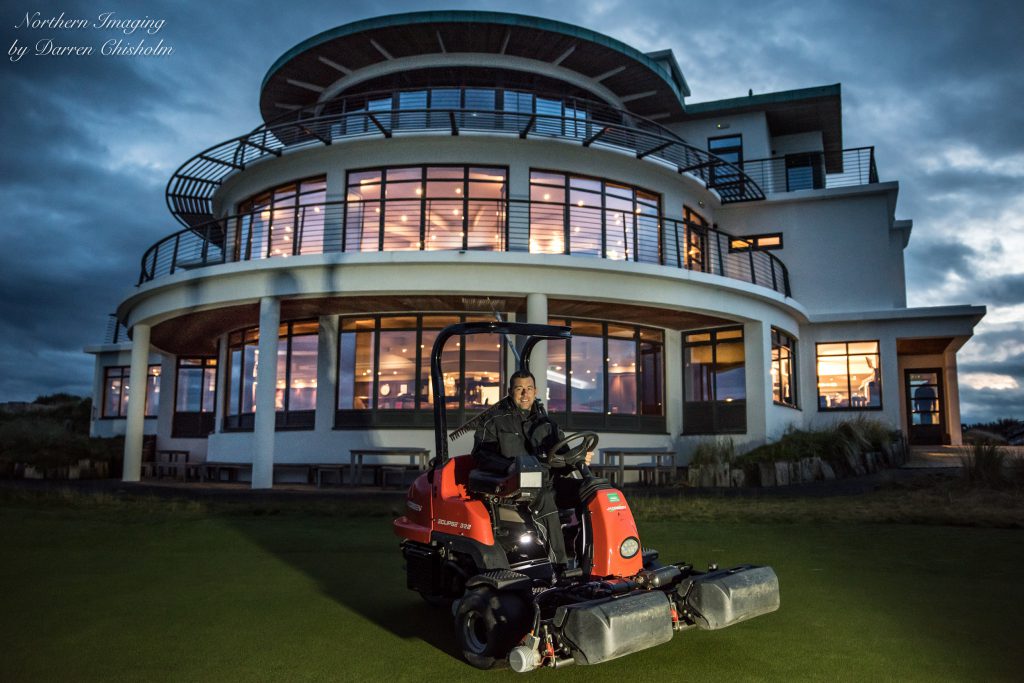Profile: Castle Stuart’s James Hutchison
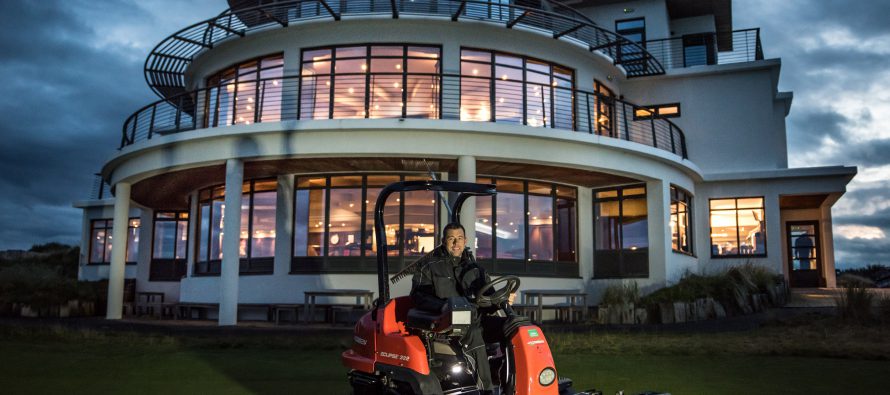
Related Articles
Castle Stuart Golf Links in Scotland, which has already hosted four Scottish Opens despite opening less than a decade ago, is considered one of the best golfing venues to have been built in the last century in the world. Greenkeeping speaks to its head greenkeeper, James Hutchison, about the work that goes into maintaining the – so far – 18 holes, plus how the club uses irrigation water efficiently and how to be environmentally friendly
Last year the internationally-renowned Castle Stuart Golf Links in Scotland, seeking to build on its reputation for sustainable and environmentally-friendly course management, appointed James Hutchison as head greenkeeper.
Replacing Chris Haspell, James, who joined Castle Stuart as a greenkeeper during its construction in 2007, had been deputy course manager since the four-time Scottish Open venue opened in 2009.
During his time at Castle Stuart, James helped create the famous links overlooking the Moray Firth while safeguarding the environment and the rich wildlife it supports.
The course – designed by Mark Parsinen, who also co-designed Kingsbarns Golf Links, and Gil Hanse, creator of the Olympic course in Rio and the new Black Course at the Streamsong Resort in Florida – has won awards for its protection of the landscape and marine areas that make up a Special Area of Conservation and Site of Special Scientific Interest.
James has worked on all four Scottish Opens at Castle Stuart and has played an integral role in developing the course, regarded as a modern icon at the forefront of discussions on the playability of golf courses.
James is also expected to be in charge of the Castle Stuart greenkeeping team that will work on a second championship course, which is being planned in partnership with the Arnold Palmer Group.
James talks to GreenKeeping about the environment, the club and his career.

What was your path to greenkeeping and how long have you now been at Castle Stuart Golf Links?
I had a love for golf and spent most of my summer holidays up on my local golf course (Kingussie) and seeing the greenkeepers out working on the course and be outside the job appealed to me then as maybe a career.
I was lucky enough to get an apprentice job at Boat of Garten Golf Club when I left school; a heathland course with tree-lined silver birch fairways. I was there for 12 years and six as deputy head, the head man (Alan Dobbie) was very good to me, he made time to explain why we were doing all the different jobs and how this would improve the look and playability of the course. Everything he had learnt over his long career he had time to pass it on to me, which I appreciate to this day.
I did block release at Elmwood College in Cupar, Fife, and got my SVQ Level 1/2/3 in sports turf maintenance.
I have been at Castle Stuart for 11 years from the start of construction.
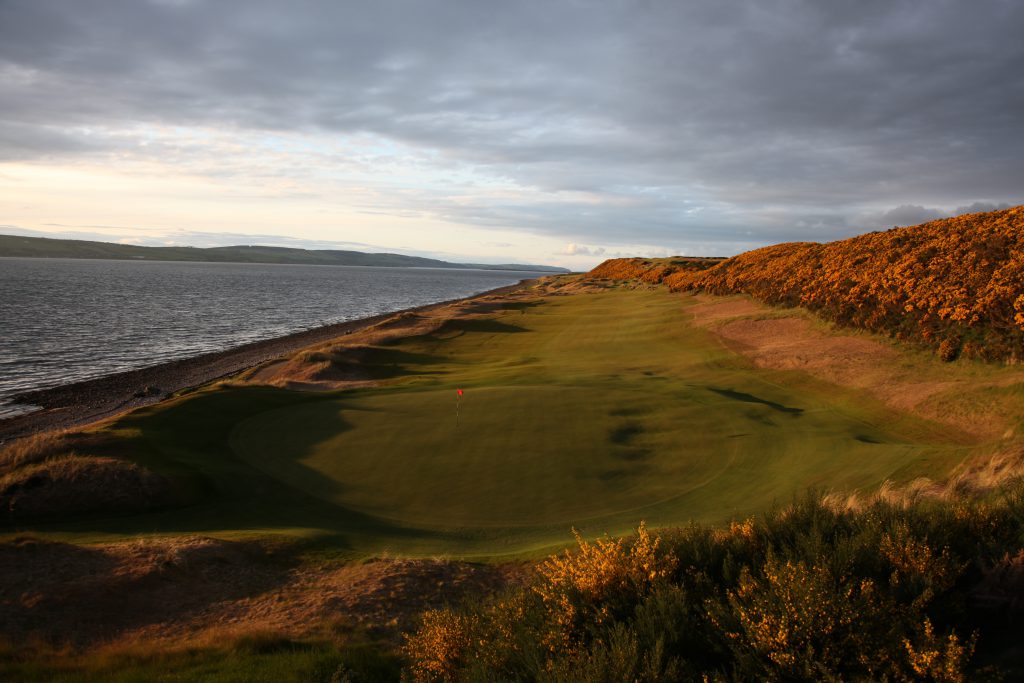
Castle Stuart Golf Links
What is the size of your team, what are their names, how do you maximise the team and resources to ensure a high end product is delivered to the playing visitors?
James Hutchison: I have a team of eight full-time staff and two seasonals with three divoters that do four hours every morning Monday to Friday:
Stuart Hawker (deputy)
Robert Fraser
Darren Chisholm
Kevin Bartlett
Peter Dowey
Kerr Edgar
Ethan Ramsay
Shaun Carney
Alan Grant
Jamie Fraser
Marion Maclennan
James Cadden
Alan Corrigan.
That’s my team and they are all able to do any job on the golf course and are very flexible with working hours to give our visitors the best product possible.

Castle Stuart Golf Club, Inverness, Scotland
You use an online turf management system by Turfkeeper, how does this help and what are the benefits to you, the team and Castle Stuart Golf Links?
Yes we use Turfkeeper. It’s an all-in-one record of everything that we use and buy. Including machines, jobs and hours that every job takes the team to get done.
It is a great way to keep records and keep on top of your budgets.

INVERNESS, SCOTLAND – SEPTEMBER 02: The 191 yards par 3, 4th hole with Castle Stuart behind on the Castle Stuart Golf Links on September 2, 2010 in Inverness, Scotland. (Photo by David Cannon/Getty Images)
We had a hard winter and you suffered some heavy frost. How badly has this impacted on the course and how far behind are you as a result and what are you currently doing to get back on target?
We have had a winter this year more like the winters we used to have seven or eight years ago. With the snow and the hard frost we haven’t had the same amount of time on the fine mowed areas therefore we were chasing a little bit to get our surface levels where they have been over the last few milder winters at the start of season.
With the colder weather it has taken a bit of time for the grass and soil temperatures to get up and for the feeding to kick in, so getting top-dressing out on all areas to help with the levels, and making sure our moisture levels are where we want them to be.
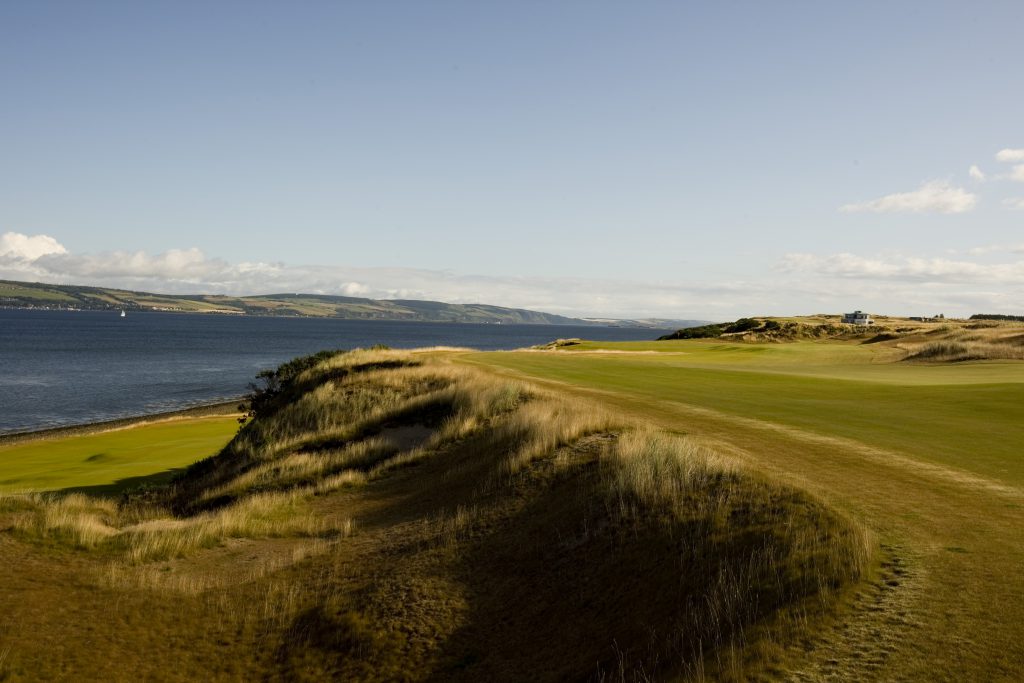
Castle Stuart Golf Club, Inverness, Scotland
The course is built on pure sand, what wetting agent programme do you run, how important is it to get it right and why and what products do you favour?
With it being pure sand, the wetting agent programme is probably our most important here at Castle Stuart.
We use Revolution and Aqueduct on our greens and tees, and Fifty 90 on our fairways.
We can lose a lot of moisture in one day in the profile and here at Castle Stuart we have basidiomycetes over the whole site which is a fungi and it can flare up if the moisture levels change up or down by more than eight or nine per cent, so that’s why we have to really focus keeping them on an even keel.

Castle Stuart Golf Links
Castle Stuart Golf Links is a high demand pay and play course and you don’t close for maintenance. How do you manage to fit around the players daily and how do you undertake necessary maintenance?
Yes, at Castle Stuart we can’t afford to be shut so we start at six in the morning to stay in front of all the paying customers and give them the most enjoyable day they can have without machines buzzing around them.
The staff at Castle Stuart are very flexible with working hours so with some jobs we will come back at night to get the job done when golf is finished.
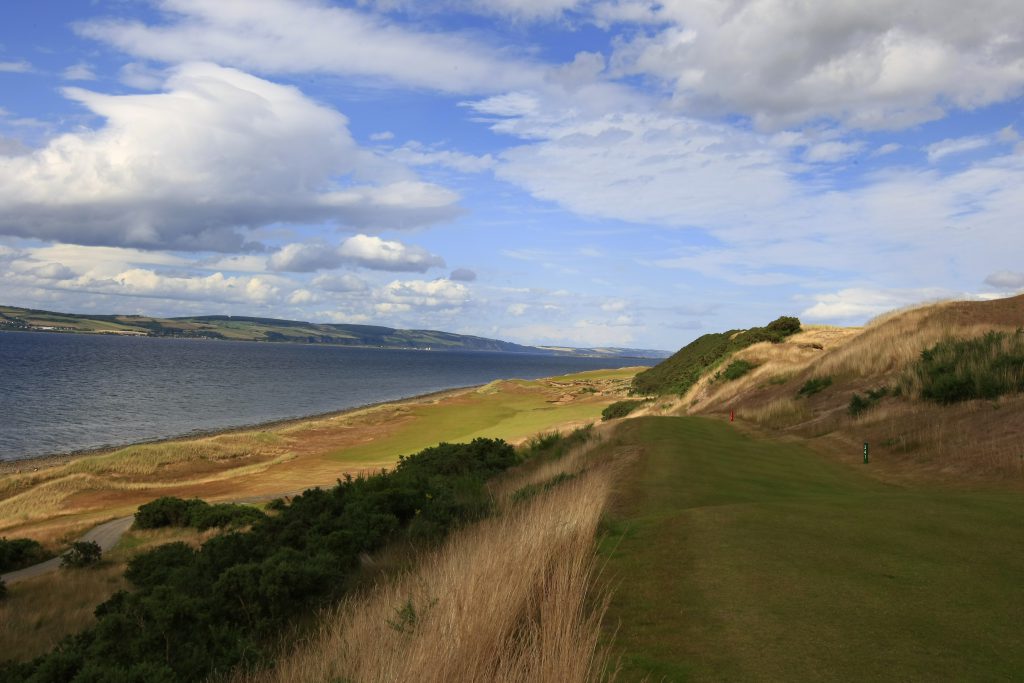
Castle Stuart Golf Club, Inverness, Scotland
You attended the Jacobsen ‘Future Training Managers Initiative’ (FTMI). What skill sets did you learn, how have they helped you personally, will any members of your team be participating and what overall value do you think this training programme delivers to individuals?
James Hutchison: Yes, I was lucky enough to be accepted for the FTMI and it opened my mind to all different aspects of becoming a course manager and how to express yourself so you can get your point across.
Also, it spent time going over budgets, and showing us how to make one up from scratch which was very helpful to dealing with all types of staff and man-management.
I will be trying to get my deputy head on the next one because it was all so helpful moving forward in my career.

What irrigation system are you currently using and how is it set up across the course, what is the source of your water, how do you manage it and how do you ensure maximum efficiency of use to maintain the plant health and playing surface?
The system that we have at Castle Stuart is Toro Lynx and it covers greens, tees, approaches, fairways and walkways.
We have to pump our water from a pond over a mile away from the course that we share with the local farmer. After May he has first dibs on it so if he needs it for his crop we can’t pump.
Therefore, we can’t waste any water so we have to be on top of our moisture levels at all times and not put water out just because they look dry. By the end of August, we normally are able to pump again.
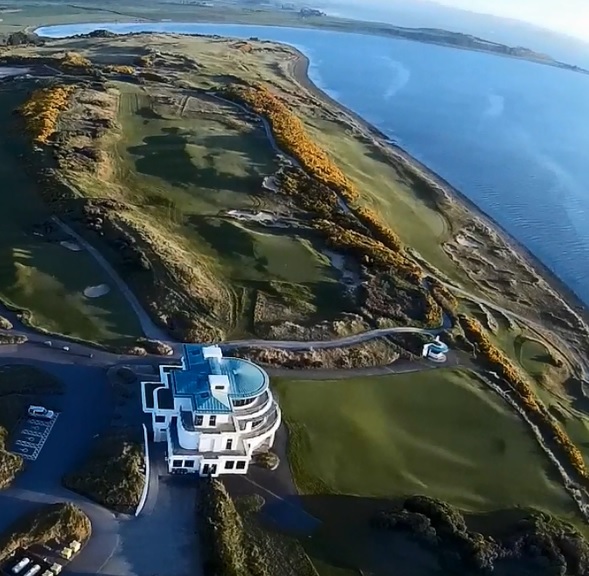
You and the team use the Jacobsen Eclipse 322. What is it that this machine delivers to you and the course, and what is the appeal of Jacobsen to you as a course manager?
James Hutchison: We have been using the Eclipse 322 for the last seven years, with the technology it has for setting what clip rate and other fine details it gives us and the quality of cut it gives – what is there not to like?!
The biggest thing that appealed to me was there is no hydraulics at all on it, so this takes away the stress and worry about leaks on the turf and loss of grass.
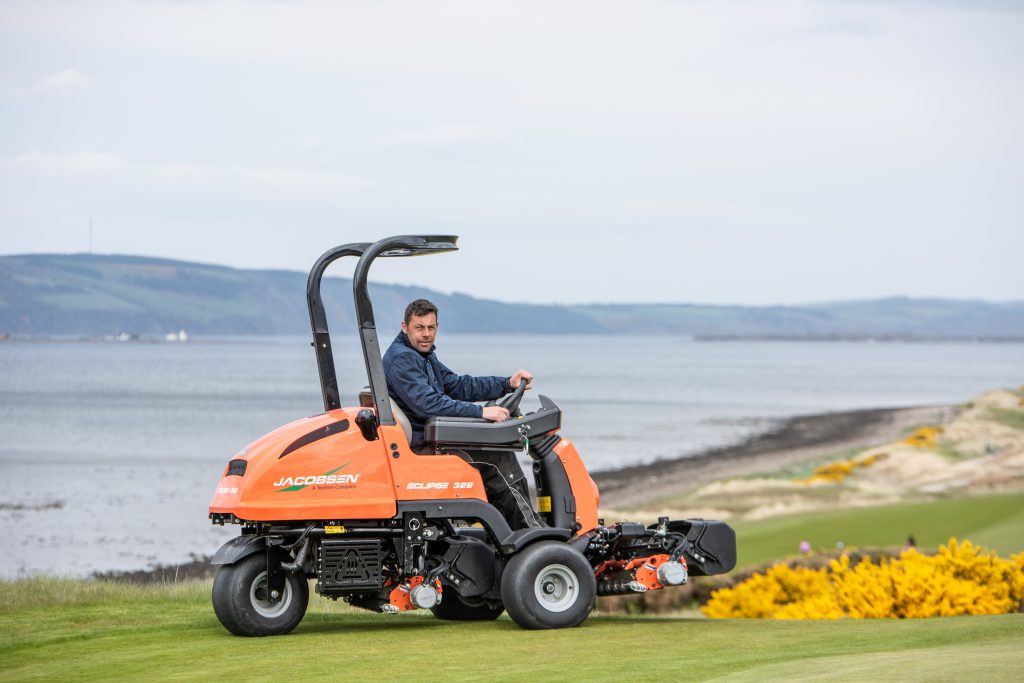
You and the team favour the Jacobsen Eclipse 2, which allows you to set the frequency of clip and mow speed. How many of these machines does the Castle Stuart Links currently have and in what way do these features of the machine help you and the team?
We have six of the Eclipse 2 hand mowers. We just like how user friendly they are.
They have a nice slow take off, no one can go faster or slower, we have them all set the same and the staff can’t change that so no matter who I put out – short, tall, fast or slow, everything is being cut the same.

The bunkers across the course are large and are very much left open to the elements. What challenges does this present, how difficult can it be and how do you manage this?
The design of a lot of our bunkers is to mimic blow outs, so the weather rips into steep faces and opens up areas and chunks of turf that fall down. This then creates little sheltered areas from wind and the elements where animals would shelter from it all and through time these areas get bigger and deeper.
There is a lot of extra hours moving sand about in this style of bunker and man hours thrown at it but it’s all worth it when you see the finished product.
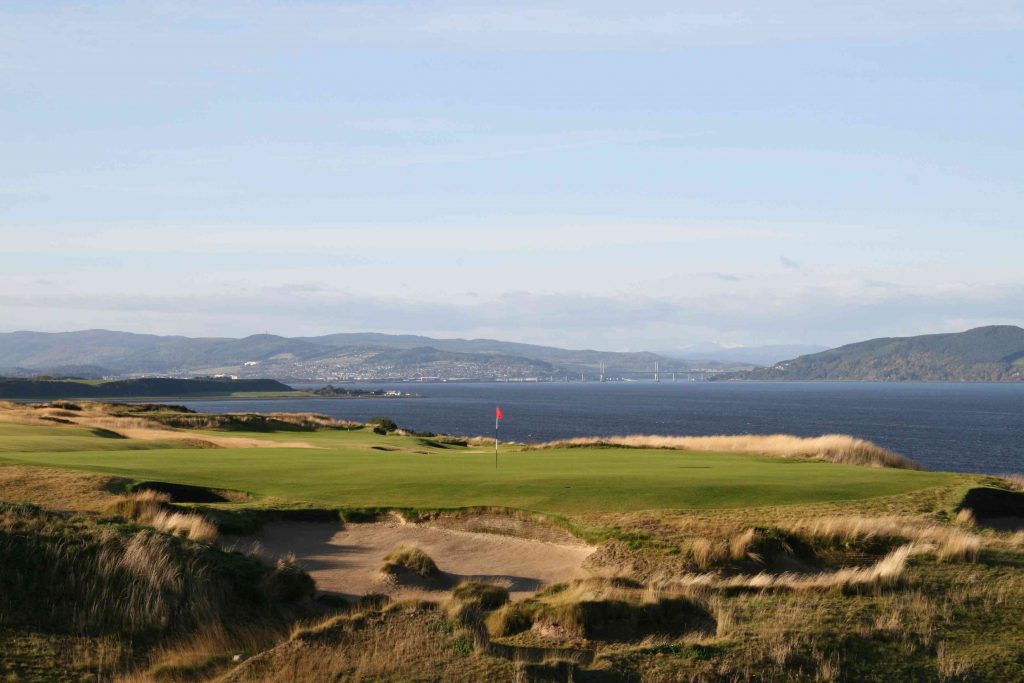
What aeration programme do you run across the course, when do you undertake the work and what are your machine preferences?
The aeration programmes we have is at least once a month and, dependent on the weather, maybe more. On tees, walkways, greens and approaches the machine that we use is the Toro 648 ProCore, that is an awesome machine. It can go anywhere in tight areas of tees where a tractor can’t get, it gives a lovely clean finish.

What do you think are the strengths that have carried you through your career and current position at Castle Stuart Golf Links and what are your goals for the course?
It’s the old cliché – you have to love the job that you do and take a lot of pride in how you leave an area whether it be cutting a green to building a tee.
I have made a point of asking as many questions as possible to better my knowledge, and if I don’t know something, don’t be too proud to ask with the risk of looking stupid, because that doesn’t help anyone get the answers. I am also a good listener and I’m always open to new and different ways of doing things, letting my team have responsibility of their own small jobs, not just being told what to do all the time. Let them think for themselves and watch from afar.
The goals are no different to any other links course; to be firm, fast and true and make sure the high standards stay at the same level all season long.
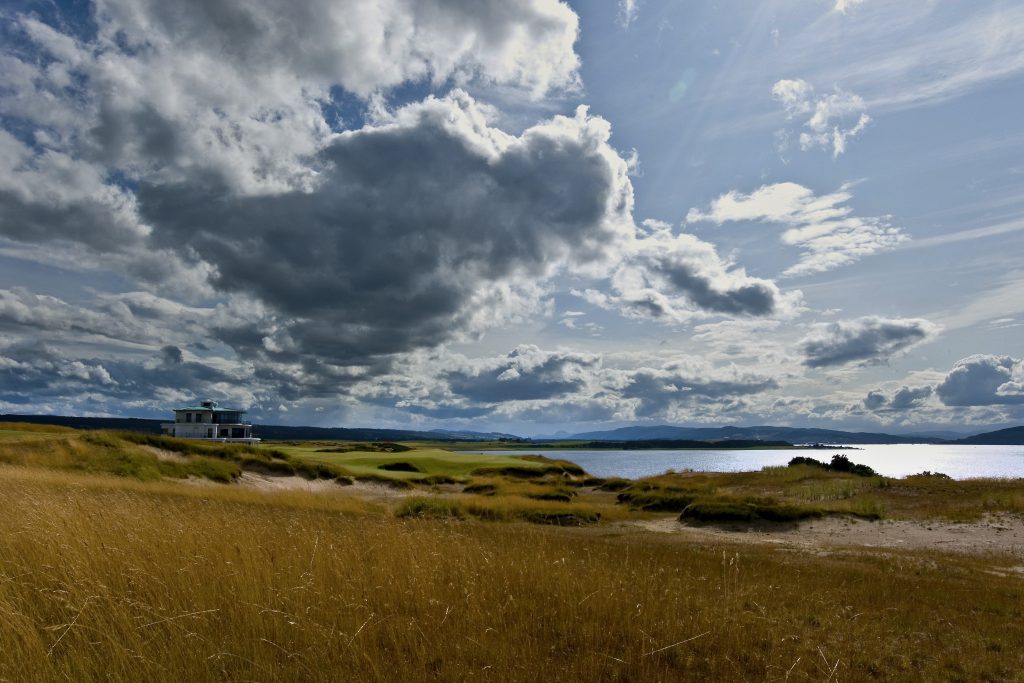
Castle Stuart Golf Club, Inverness, Scotland
What height of cut do you use across the course and what man-hours are spent mowing?
James Hutchison: Greens – 5mm, four hours daily; tees – 9mm, four hours every second day; fairways – 10mm, eight hours once a week; rough – one cut at 30mm, second cut at 100mm, eight hours to do both.

What fertiliser programme do you run across the two courses and what products are you using?
James Hutchison: We put down a slow release granular feed in the spring (March). We top that up through out the season when needed, with liquid feeds (seaweeds). In late autumn (end of October) we put down another granular feed with less nitrogen in it so we are not getting too much top growth but strengthening the plant going into the winter.
Current products: Sierrablen Plus and Greenmaster Pro-Lite. Liquid feeds: Porthcawl (seaweed).

Castle Stuart Golf Club, Inverness, Scotland
The pressures on the course manager to deliver a better product are growing year on year and the level of professionalism is rising with this. What do you think are the qualities now needed to meet the requirements and demands of members / players by someone in your position and how does this help contribute to the business of golf?
The business is more professional than it has ever been, there is more qualifications out there to achieve and greenkeepers in general are travelling around and looking at other courses and seeing different ideas and methods and asking each other what is working and what does not work.
Where as years ago most greenkeepers / managers kept themselves to themselves and did not share knowledge and talk about new products as freely as we do nowadays, leading me to believe this is why the standards are also rising along with educating their members in why they are carrying out certain jobs on the golf course and the reasons for doing it.

What currently gives you the greatest satisfaction from your job, how do you feel daily when you are moving around the course looking at what you and the team have achieved and what do you feel are your biggest achievements to date?
James Hutchison: There is no better feeling than walking around the course and seeing the hard work that all the team has put in that week and seeing all the golfers enjoying their game and commenting on how good the course looks and plays. If they are happy we have done our job right.
Biggest achievements for us would be holding four Scottish Opens within the first seven years of opening, with some very testing times in the first Scottish Open. However, everybody dug deep and got it playable but it was only manageable due to the staff being very proud of what they deliver to the golfer, even with just three hours sleep on one of the days, that is commitment.

Castle Stuart Golf Club, Inverness, Scotland
With your experience and achievements, what advice would you give to youngsters starting out and wanting to pursue a career in the profession?
Don’t be frightened to get involved and ask questions, make a point of finding out all aspects of greenkeeping with online / journal research and asking your senior greenkeepers; we all started out just like them.
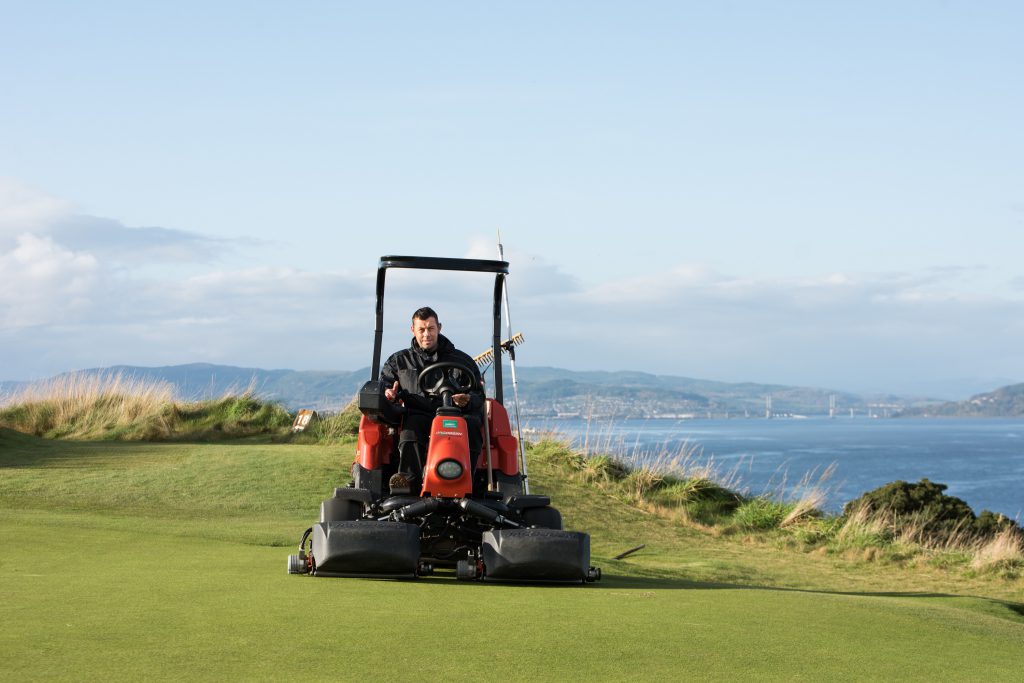
What changes do you think need to be made to benefit the industry sector and profession of the greenkeeper?
James Hutchison: I think everyone has to work up through the rankings, learning as you go and not jumping too far ahead without doing the ground work. You need to have a good understanding of the job as sometimes on paper it does not match what you experience out on the field.

